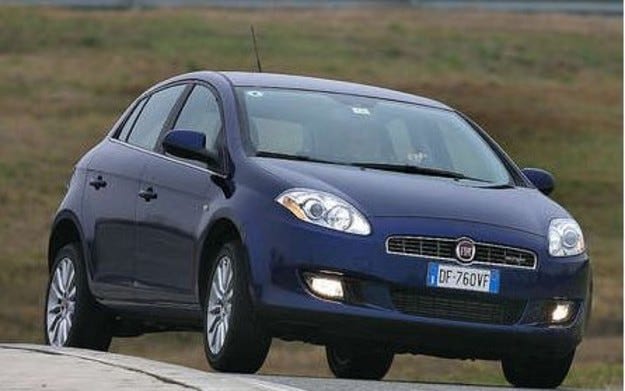
Test drive Fiat Bravo: first test drive

With soft and elegant lines combined with sophisticated technology, Fiat Bravo aims to make the public forget about the not-so-successful Stilo sales model. First impressions.
After a long period of poor financial performance, Fiat has started to get back on its feet with the launch of the hugely quantitatively successful Grande Punto, which means a 21 percent increase in global sales, a 1,1 percent increase in the company's market share in Europe - it is completely logical that the Italians will only strengthen its positions with new attractive models. This process appears to be done in record time because the new Bravo became a production car in just 18 months thanks to the Stilo platform, which has been radically redesigned but not replaced by a new one, and virtual construction methods. , thanks to which most of the work on the project was carried out on a virtual basis, and not on real prototypes.
Compact model with dynamic temperament
The result is a Golf car, yet exuding a huge amount of Italian spirit with the refracted prism of Fiat's design philosophy. Thus, at first glance, the new Bravo can be recognized as the older brother of the Grande Punto, although it carries the genes of the first Bravo (note, for example, the taillights) and Stilo (almost all technology is identical to the previous model). ...
The lateral line, wide shoulders and extremely elegant rear end are completely new. Unfortunately, the latter had a slightly negative effect on the feeling of space for rear seat passengers - there is enough space in height and width, but not much. The forward landing is optimal, and the atmosphere shows a slight dynamic slope. The Bravo's instrument panel is elegantly curved, and the instruments behind the steering wheel are housed in "caverns" known from Alfa models. For those accustomed to Fiat, the control of all functions is perfectly normal - the levers behind the steering wheel, the air conditioning commands and the large Connect Nav + info-navigation system are very close to the solutions used in its predecessor. The same goes for the rear seat folding mechanism, which allows you to increase the standard load volume from 400 liters to 1175 liters.
Top-end engine offers power and distinctive sound
It seems that even light, but rather indirect driving is well known from the Stilo. However, in the Sport version, the steering is fitted as standard with a button of the same name, which reduces the power steering action and provides a more direct engine response.
At launch, Fiat will rely on the already installed engines: a 1,4-liter with 90 horsepower and a 1,9-liter turbodiesel with eight valves at 120 and sixteen valves at 150 horsepower. A new 1,4-liter petrol turbo engine with 120 or 150 horsepower will go on sale in the fall. The latter demonstrates a smooth unfolding of the torque curve, without sharp dips and eruptions and without a turbo hole. Its sound is aggressive, but at high revs it becomes overly loud and even then the power supply is noticeably weakened, so it is recommended to use the engine mainly at medium revs.
In general, the multi-link rear suspension chassis is almost identical to the Stilo's, but has undergone a number of minor changes, the most important of which is a tighter adjustment. The passage through the wavy bumps is surprisingly smooth, and through the sharper ones - not so much. The ESP system is standard on all modifications, as are seven airbags.